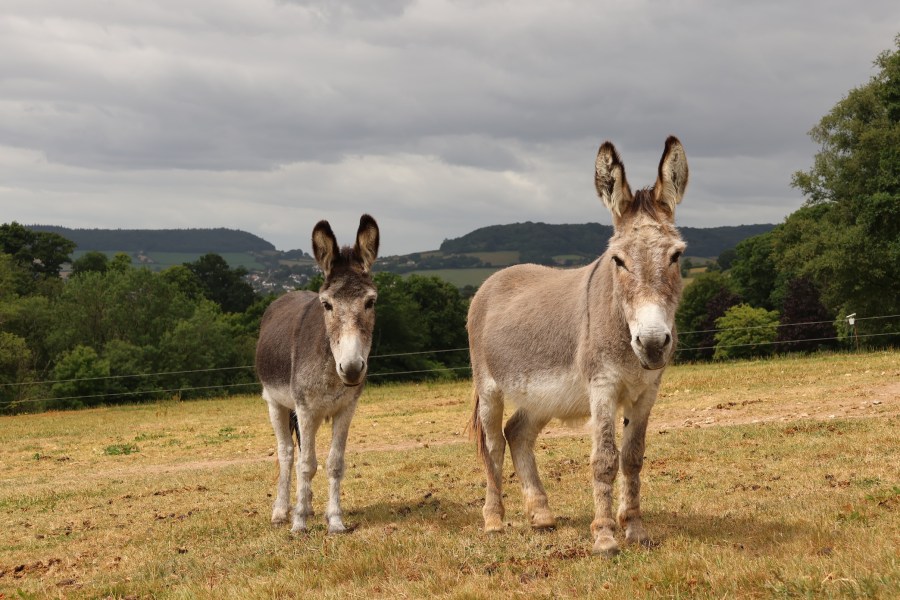A rescued donkey endured a prolonged stay in hospital after a tiny fragment of bone prevented the site of a tooth extraction from healing in his mouth.
Darby, a 15-year-old brown gelding, was referred by equine dental technician Kelsey Ham for the extraction of one of his lower cheek teeth in December last year.
The tooth had been displaced, causing food to pack around it, which if left untreated could cause gum disease.
The surgery, which was carried out by veterinary surgeon’s Alice Hodgson and Curtis Goding, went well and the initial healing process went to plan.
However, several weeks later, staff at the sanctuary’s yard in Sidmouth, Devon, noticed discharge from the left side of the donkey’s lower jaw.
Complications
It appeared to be unrelated to his tooth extraction, due to the socket continuing to heal well, and so Darby was treated for an infected wound.
When the wound failed to heal, he was readmitted to the dedicated donkey hospital for radiographs and monitoring.
Darby, who was accompanied by his herdmate Gabrial [sic] on both occasions, spent several months there as an in-patient and received daily medication alongside extensive diagnostics.
Sanctuary experts carried out blood work, multiple radiographs and contrast radiographs, along with ultrasound scans and wound flushes.
Darby also underwent surgical wound debridement (the removal of dead, damaged or infected tissue from a wound to promote healing) as well as regular flushes of the socket and diastema (gaps between teeth).

Tiny bone fragment
Scans revealed that a sequestrum, which is a tiny fragment of dead bone left from the extraction, was preventing the wound from healing.
“After removing Darby’s tooth we were struggling to identify the reason for his non-healing wound, as scans were not initially picking up the secondary bone formation,” said Alice.
“We know that a sequestrum (bony fragment) is a possible complication of an extraction, however, they are notoriously difficult to spot.
“Thanks to the expert attentiveness of the team caring for him, we were able to identify the issue and begin treatment.”
Sanctuary vets carried out a short procedure to remove the fragment.
“I was so relieved to take it out and know we’d finally found the solution that would allow him to heal,” Alice said.
After several months away, Darby trotted back into his field in Sidmouth to a chorus of welcoming brays.
Now fully healed, he and Gabrial are back to enjoying herd life.
Regular dental checks
Annual dental checks are essential for maintaining good teeth health in donkeys, as well as horses and ponies.
Donkeys develop two sets of teeth in their lifetime.
The first are deciduous teeth, which emerge within weeks of birth.
These are replaced by permanent teeth around five years of age, and is one of the reasons teeth can be used to estimate an equine’s age.
“Dental issues can cause significant pain and impair eating, but donkeys’ stoic nature often masks symptoms,” said a statement from The Donkey Sanctuary.
“Because problems are not easily visible, regular examinations by a qualified professional are crucial for early detection and treatment.”
Images © The Donkey Sanctuary







